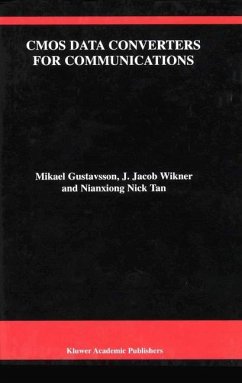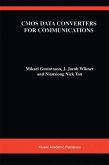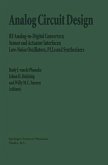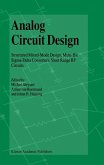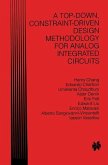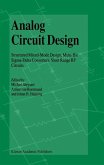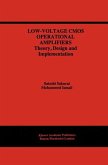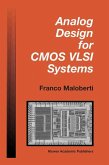CMOS Data Converters for Communications distinguishes itself from other data converter books by emphasizing system-related aspects of the design and frequency-domain measures. It explains in detail how to derive data converter requirements for a given communication system (baseband, passband, and multi-carrier systems). The authors also review CMOS data converter architectures and discuss their suitability for communications. The rest of the book is dedicated to high-performance CMOS data converter architecture and circuit design. Pipelined ADCs, parallel ADCs with an improved passive sampling technique, and oversampling ADCs are the focus for ADC architectures, while current-steering DAC modeling and implementation are the focus for DAC architectures. The principles of the switched-current and the switched-capacitor techniques are reviewed and their applications to crucial functional blocks such as multiplying DACs and integrators are detailed. The book outlines the design of the basic building blocks such as operational amplifiers, comparators, and reference generators with emphasis on the practical aspects. To operate analog circuits at a reduced supply voltage, special circuit techniques are needed. Low-voltage techniques are also discussed in this book.
CMOS Data Converters for Communications can be used as a reference book by analog circuit designers to understand the data converter requirements for communication applications. It can also be used by telecommunication system designers to understand the difficulties of certain performance requirements on data converters. It is also an excellent resource to prepare analog students for the new challenges ahead.
CMOS Data Converters for Communications can be used as a reference book by analog circuit designers to understand the data converter requirements for communication applications. It can also be used by telecommunication system designers to understand the difficulties of certain performance requirements on data converters. It is also an excellent resource to prepare analog students for the new challenges ahead.
` ...an excellent introduction to the field of data converters for communications. Moreover, it can be used by system designers to trade off the various performance and requirement issues, especially in wireless and wire-bound front-ends. In addition, expers will benefit from this reference book in numerous ways, be it on circuit, systems, or measurement issues. Overall, this book is very delightful to read and understand. It gives deep insight into the field of data converters for communcations, from the system perspective as well as from the circuit and measurement viewpoint. A must in every engineer's bookshelf!' Circuits & Devices (2000)
` ...an excellent introduction to the field of data converters for communications. Moreover, it can be used by system designers to trade off the various performance and requirement issues, especially in wireless and wire-bound front-ends. In addition, expers will benefit from this reference book in numerous ways, be it on circuit, systems, or measurement issues. Overall, this book is very delightful to read and understand. It gives deep insight into the field of data converters for communcations, from the system perspective as well as from the circuit and measurement viewpoint. A must in every engineer's bookshelf!'
Circuits & Devices (2000)
Circuits & Devices (2000)

